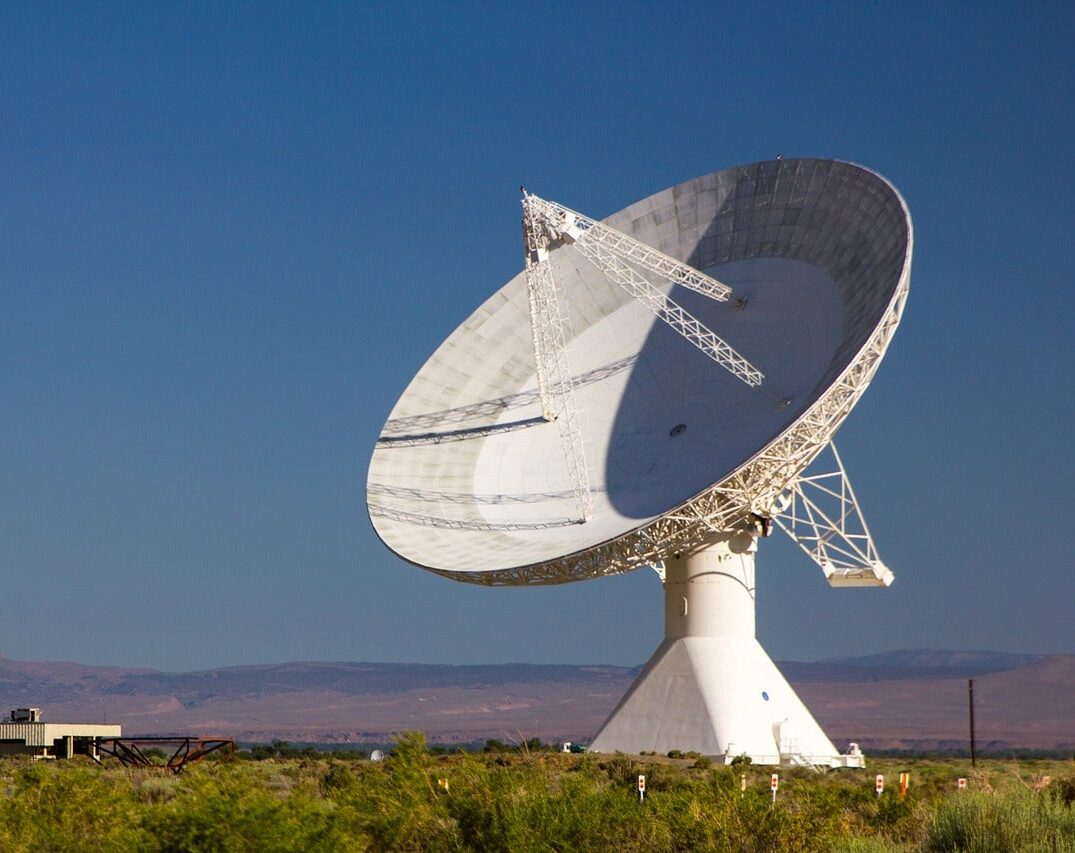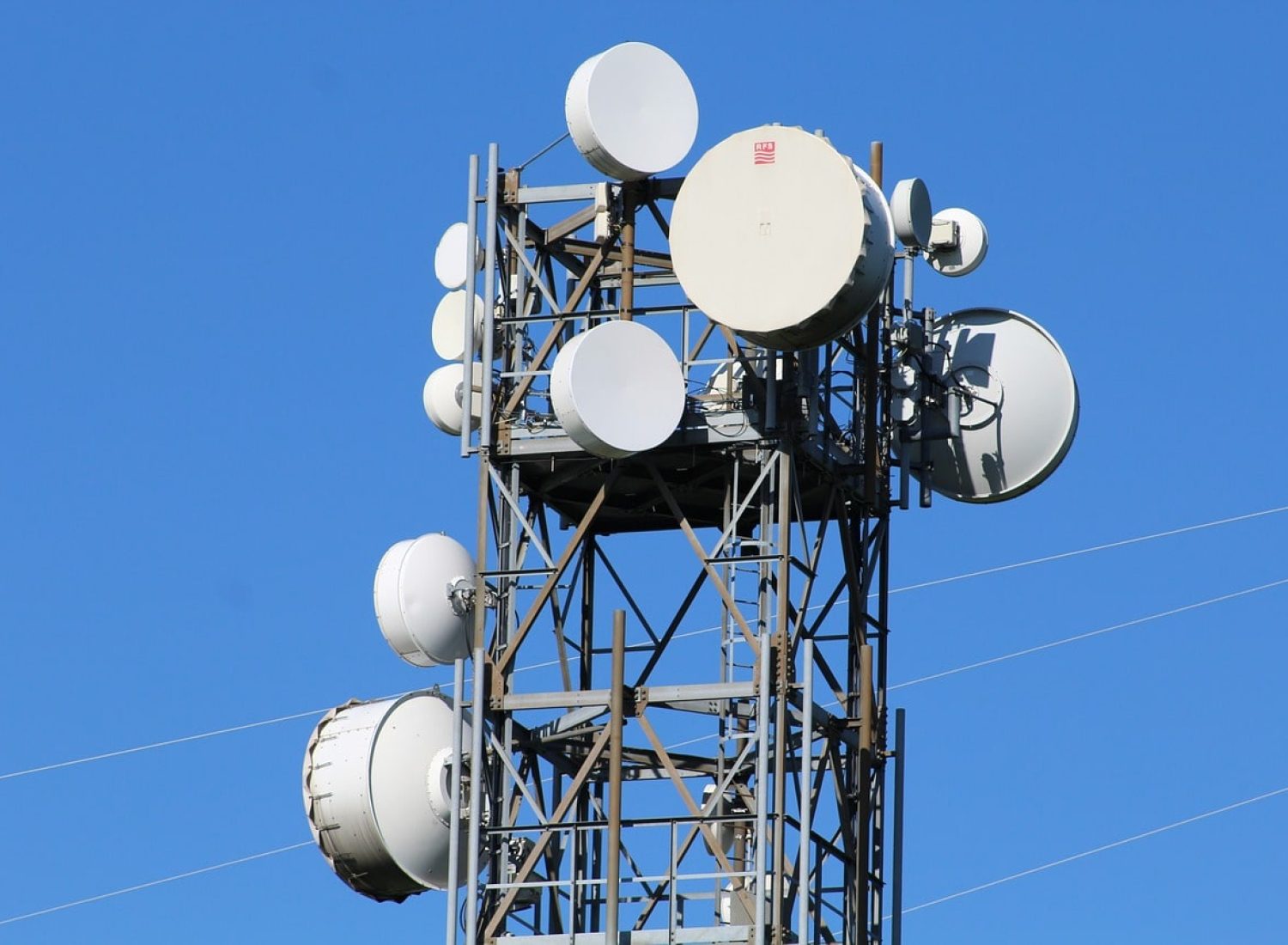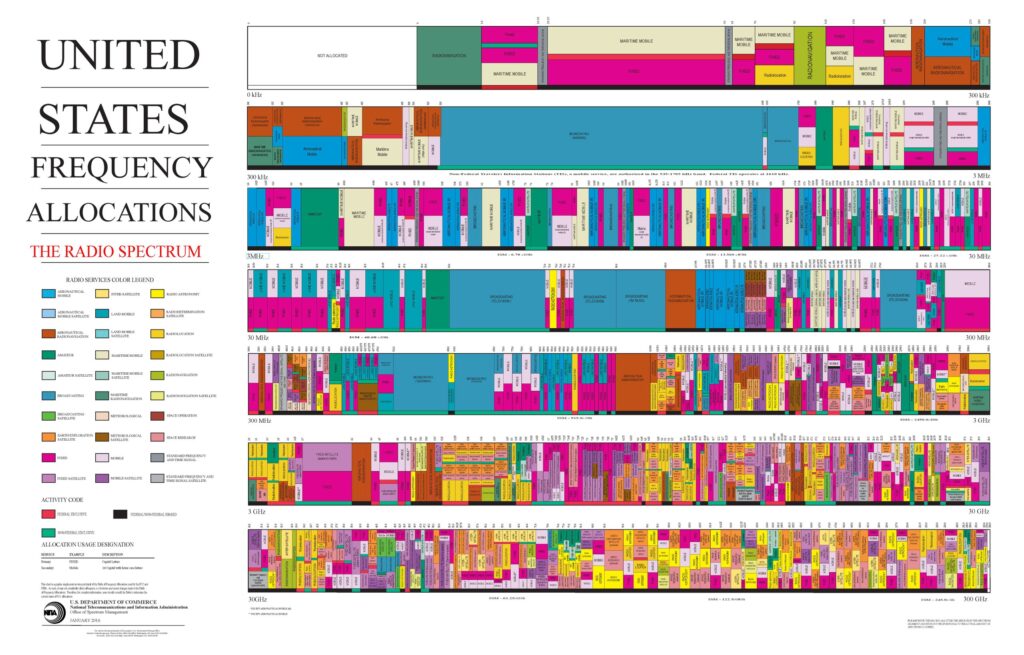What is Radio Frequency Interference (RFI)?
Radio Frequency Interference (RFI) is defined by radio astronomers as any radio signal not of cosmic origin that disturbs sensitive radio astronomy instrumentation and/or observations. This interference can be generated by human-caused sources such as communication signals or radio noise produced by electronic circuits. Because radio astronomers sweep across nearby bands that may be outside their allocated bands to follow the expansion of the Universe, their observations are susceptible to other radio transmissions, such as cell phones, television, Wi-Fi, walkie-talkies, Bluetooth devices, radio transmitters, and satellites. Human-caused radio transmissions produce much stronger signals than celestial sources do, and they can have a range of effects on radio astronomy, from loss of data due to contamination (such that increased observation time is required to obtain the same sensitivity) to actual hardware damage inflicted on sensitive receivers.


Frequency Allocations
Spectrum regulation generally refers to the Radiocommunications Sector of the International Telecommunication Union (ITU-R) definitions of radio services (broadcasting service for TV; mobile service for cell phones; fixed-service for microwave data links; fixed-satellite and mobile-satellite services for SATCONS, and dozens of others) and the allocation of spectrum bands to particular services with rules for their use. Most spectrum bands are shared among several active services, but 2% of the spectrum below 86 GHz is in bands shared only among passive services, for example the 1400 – 1427 MHz band that is used to observe the 21cm line of HI in the local Universe. Although the passive bands originated with radio astronomy, their most important current use is by Earth-sensing satellites that measure soil moisture, ocean salinity and surface temperature, wind speeds, air turbulence, and other environmental parameters.
Spectrum Management
Since the radio spectrum is used for many different purposes, it is heavily regulated to prevent interference. The highest level of regulation occurs at the ITU-R. Within the United States, the Federal Communication Commission (FCC) regulates the radio spectrum for private users (including radio astronomy) and in spectrum that is shared between non-Federal and Federal users. Almost every ITU member country has its own analogous national administration.


Radio Quiet Zones
Geographic isolation is the most effective means of forestalling RFI from terrestrial radiocommunications. Radio quiet zones (RQZs) are remote areas where use of radio spectrum is specially managed to benefit radio astronomy. More than a dozen RQZs have been created world-wide. Unfortunately, RQZs are not yet recognized internationally, so protection from satellite and airplane signals is not guaranteed.
Mitigation Techniques
To mitigate the impacts of RFI on ground-based astronomy, astronomers employ measures such as shielding, filtering, RFI detection and processing in the data analysis phase, and careful site selection in remote regions with minimal sources of terrestrial interference, such as Radio Quiet Zones. For the most part, astronomers can track the location of satellite signals. Astronomers know the allocations and the locations of most transmitters which can help them to devise strategies to mitigate harmful interference. While the geosynchronous belt of satellites can typically be avoided, the burgeoning use of non-geosynchronous satellites presents new challenges. Radio astronomers are actively working with satellite operators to mitigate impacts on radio telescopes.


Impact of Large Satellite Constellations
Satellite constellations are groups of satellites working together to provide communications services such as broadband internet. Examples include Starlink and OneWeb, which transmit in multiple frequency bands across the radio spectrum ranging from 140 MHz to 76 GHz. These satellites can be troublesome to radio telescopes since they transmit signals orders of magnitude stronger than many of the astronomical signals. In other words, satellite transmissions produce an effect similar to pointing a flashlight in one’s eyes in a very dark room. It is estimated that within the decade, the number of satellites in Low Earth Orbit (LEO) (with altitudes of 300-1200 km and orbital periods of 60-90 minutes) may surpass one million in number.
Public Awareness and Industry Cooperation
Raising public awareness about the impact of RFI on radio astronomy is essential, as is collaborating with industries, telecommunications companies, and regulatory bodies to mitigate impacts on observatories. Encouraging responsible use of wireless technologies and promoting cooperation in minimizing RFI sources can contribute to effective long-term mitigation. Recognition of protected radio astronomy bands as “clean windows” that allow observation of celestial phenomena in an age of increasing radio activity is of utmost importance.


What AAS is doing
COMPASSE members advocate for radio astronomy protections at fora such as the World Radiocommunication Conferences and other meetings of the International Telecommunications Union. Through its Public Policy office, AAS tracks related federal legislation and agency rulemaking that may affect the regulation of the radio spectrum. AAS was also a key participant in the SATCON 1 and 2 workshops, the Dark and Quiet Skies for Science and Society I and II conferences, and IAU Symposium 385 (Astronomy and Satellite Constellations: Pathways Forward), at all of which radio interference concerns were a major topic of discussion.
Recent actions
- June 2024: COMPASSE comments on proposed FCC Rulemaking on Supplemental Coverage From Space
- April 2023: AAS endorsement of NRAO Comment for Development of a National Spectrum Strategy

Resources
Learn more about this topic on the following links:
- Radio Frequency Interference (National Radio Astronomy Observatory)
- ITU Radiocommunication Sector (ITU-R)
- World Radiocommunications Conferences (WRCs)
- “Radio interference from satellites is threatening astronomy” (Astronomy Magazine)
- “Radio Frequency Interference” (in Interferometry and Synthesis in Radio Astronomy, 2017)
- How does RFI affect Radioastronomy Data? (CSIRO)
